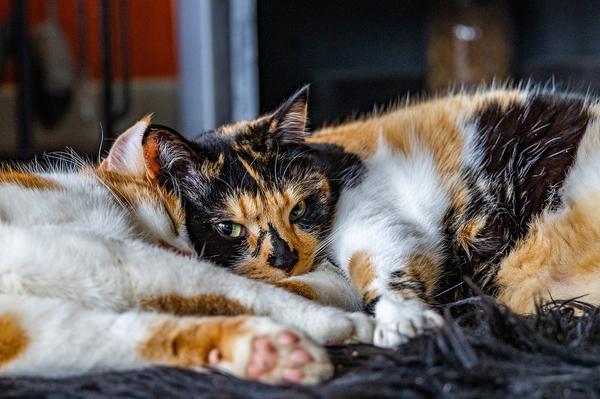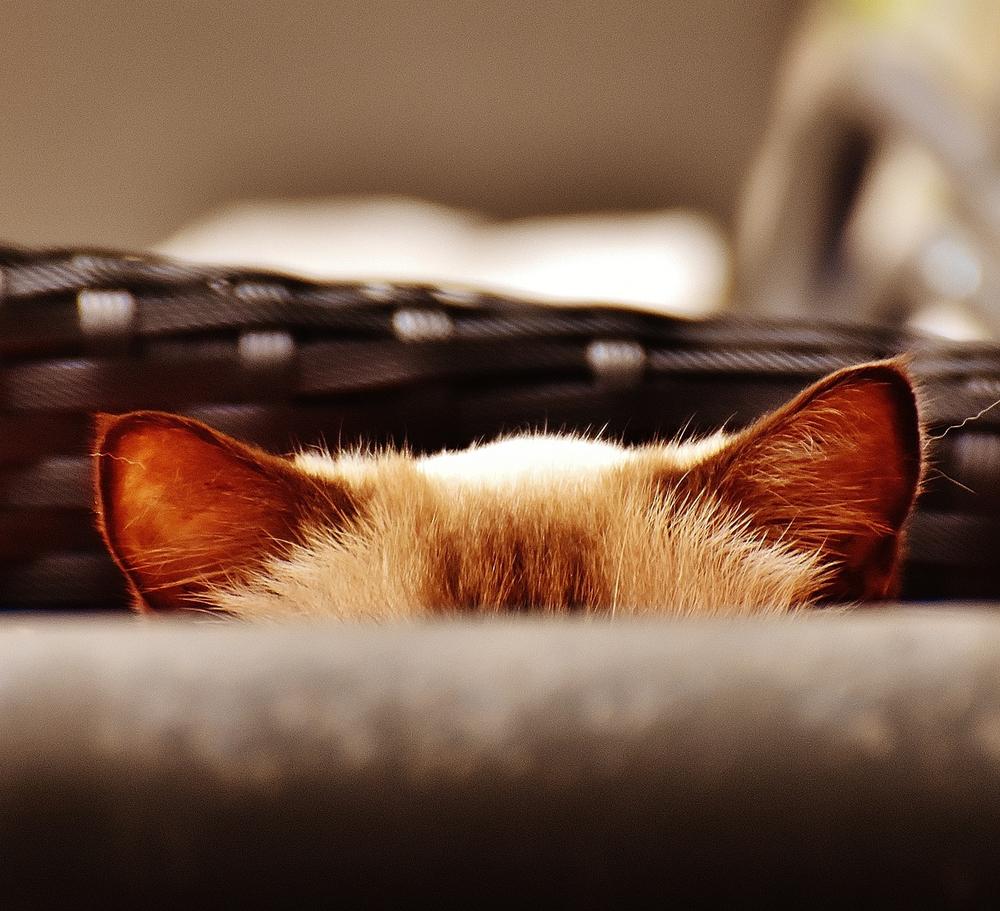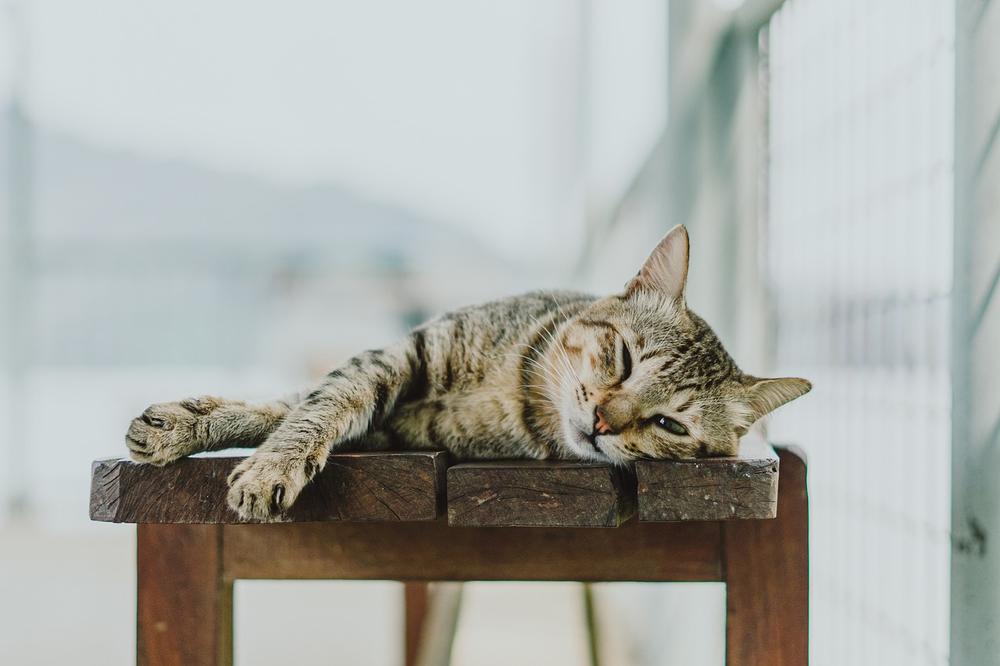How Do Cats Communicate With Each Other? (Revealed!)

Ever wonder how cats really communicate with each other?
Think their meows are just cute little noises?
Well, hold on to your whiskers, because we're about to explore the fascinating world of feline communication. 😺
You know that feeling of being utterly captivated by those mysterious creatures?
Let's dive in and uncover the secrets of their unique communication methods.
Time to decode the language of the whiskered ones!
Together, we'll unravel the enigma, one meow at a time.
Let's begin.
Cat Communication: Decoding Signals, Scent Marking, and Their Importance
Cats talk in different ways, like making sounds, using their bodies, and leaving scents.
Knowing these signals is key to getting along with kitties.
When cats touch each other by rubbing their faces or bodies, it's a way of passing on their scent and strengthening their bond.
Scent marking is an important way for cats to communicate too.
They release chemicals called pheromones through actions like rubbing, scratching, and peeing to mark their territory and talk to other felines.
By decoding these scent messages, cats can figure out things like who's available for mating, where the boundaries are, and if there are any other cats around.

To be better at communicating with cats, take the time to understand and interpret these signals.
Playing with cats is also important because it lets them practice their instincts and develop their communication skills.
Learning about cat behavior not only helps you form strong connections but also ensures their overall well-being.
Now, here are some simple tips for understanding what your cat is saying:
- Pay attention to the different sounds they make, like meowing, purring, hissing, and growling.
- Keep an eye on their body language, like how their tail moves and the position of their ears.
- Notice how they rub themselves against things or people.
- Understand how important scent is to cats and why they do scent-marking stuff.
- Spend time playing interactively with your cat to keep their mind stimulated and improve communication. 🐱
Main points I'll expand upon further down this article:
- Visual signaling and body posture are important in feline communication.
- Postures and behaviors can indicate cat emotions like fear, curiosity, and aggression.
- Eye contact and blinking can convey different messages.
- Body positions like an arched back or rolling onto their backs convey different meanings.
- Cats communicate through head-butting, rubbing, and various body movements.
- Vocalizations play a significant role in cat communication.
- Meowing is primarily directed towards humans, while purring indicates contentment.
- Aggressive vocalizations include growls, howls, snarls, and hissing.
- Cats use their tails to communicate their mood and intentions.
- Cats leave messages for other cats through urine spraying, marking, rubbing, and scratching.
But how do you actually interpret all these signals and decode your cat's communication?
Well, understanding the position of a cat's ears can give you valuable insights into their mood and intentions.
Discover how visual signaling and body posture form an integral part of feline communication in the next section!
You won't believe just how much information you can glean from a simple movement of their ears or change in facial expression.
Stay tuned to unlock the secrets of cat communication and deepen your bond with your furry companion!
Visual Communication Methods in Understanding Cat Expressions and Gestures
Understanding cats can be tricky, but it's not impossible.
Here are ways to decode your furry friend:
- Pay attention to their ears. If they're flattened back, it could mean fear or aggression. Forward-facing ears show curiosity.
- Watch for changes in posture. Crouched bodies or low stances often precede aggressive behavior.
- Look at their eyes. Wide-open eyes indicate fear, while slow blinks convey contentment and love.
- Notice their body language. An arched back means aggression, while rolling onto their back shows friendliness.
- Cats communicate using various body parts. Head-butting and rubbing spread scent. Nose-touching, tail movements, and ear movements also send messages.
While vocalizations and postures provide clues about a cat's mood, scent messages play a more complex role in feline communication.
By observing these visual signals, you'll understand what your cat is trying to say better. 😺

I highly recommend checking out my article Cat Hissing but Friendly if you want to delve deeper into feline communication.
In the post, I discuss why a cat might be hissing while still being friendly.
Understanding the complexities of cat expressions and gestures can be challenging, but my guide offers valuable insights that will help you interpret your furry friend's non-verbal cues.
Don't miss out on this enlightening read!
Decoding the Meaning Behind Cat Vocalizations
Cats use a variety of vocalizations to communicate with humans and other cats. Meows can indicate happiness or distress, while aggressive sounds signal conflict. Purring signifies contentment, and trilling is a loving greeting. Pay attention to your cat's vocalizations as they are trying to convey their needs and emotions.
Cats have many different ways of communicating with each other, using a wide range of vocalizations that convey specific meanings.
The short, high-pitched meows they make are like a friendly greeting from your furry companion, an indication that they are happy to see you.
On the other hand, if you hear prolonged or low-pitched meows, it may be a sign that your cat is feeling distressed or wants your attention.
It's their way of saying, "Hey, pay attention to me!"
Vocalizations are an important part of how cats communicate not only with humans but also with other cats.
They primarily use meowing as a language to communicate with us and can be quite talkative when they want something!
However, meowing isn't the only communication tool that cats use.
They also make a whole range of sounds to convey different messages.
From hissing and growling to trilling and more, these sounds provide vital context in their interactions with other cats.
If you hear aggressive vocalizations like growls, howls, snarls, or whines, there may be a serious disagreement happening between cats. This is usually accompanied by hissing, growling, and a raised tail, indicating that they mean business!
Cats also have specific sounds to communicate the presence of prey.
When they make chirping or chattering sounds while staring at a bird outside the window, they are essentially saying, "Look what I found!"
Purring is a classic sign of contentment and friendliness in a cat.
However, you must note that cats can also purr when they're feeling stressed or anxious, so it doesn't always indicate pure bliss.
Another interesting sound cats use is called trilling.
It's a rolling, melodic sound that cats make to greet each other or express their excitement and happiness.
If your cat trills at you, consider yourself lucky—you're being greeted with love!
It's fascinating to know that adult cats have actually evolved to meow primarily towards humans.
They've learned that we respond well to this sound, so they use it to communicate their needs, desires, and to charm us.
So, the next time your cat starts meowing or making any of these interesting sounds, pay attention...
They are trying to tell you something, whether they need your love and affection, want to play, or simply saying, "Hey, human, I'm here!
Tail Movement and Its Communication
The Language of a Cat's Tail
Ever thought about what your cat is trying to say with its tail?
Well, let me tell you, cats have their own special language and the tail plays a big part in it.
Rapid wagging: Be cautious!
You know how dogs wag their tails when they're happy?
Cats are a bit more complicated than that. If you see your cat quickly wagging its tail, it's best to approach with caution. This could mean they're agitated or excited and might not be up for cuddles.
So, give them some space and be aware.
Upright and tall: Friendly hello!
Now, if your cat walks towards you with an upright and tall tail, consider yourself lucky.
It's a friendly greeting.
Your furry companion is showing happiness and contentment, and they definitely want some attention.
Give them a stroke or two, and you'll see pure joy in their eyes.
Puffed-out and erect: Watch out!
On the other hand, if your cat's tail becomes puffed-out with hairs standing on end, it's time to step back. This is a clear sign of aggression.
They're saying, "I'm ready to fight," so it's best to give them space and avoid any confrontations.

Understand that they may feel threatened or be protecting their territory.
Tucked-down: A signal of submission or nervousness
Lastly, when your cat tucks its tail down between its back legs, it often means submission or nervousness.
Your little furball might feel unsure or worried about something. Approach gently, create a calm environment, and provide reassurance.
Let them know they're safe and loved.
By paying attention to these tail signals, you can better understand your feline friend's emotions and communicate effectively with them.
Actions speak louder than words, especially in the world of cats!
If you're curious about why your cat wags her tail while purring and if it's a normal behavior, check out Why Does My Cat Wag Her Tail While Purring. Discover the fascinating insights and valuable information that can help you understand and communicate with your furry friend better.
But did you know that cats also communicate and mark their territory in other fascinating ways?
In the next section, I'll reveal some of these unique methods, including facial rubbing and urine spraying, and explain how they release pheromones to convey important information.
Trust me, you won't want to miss this!
The Power of Pheromone Communication and Territory Marking
Cats communicate and mark territory using facial rubbing and urine spraying, releasing pheromones that share vital territorial information among felines.
By rubbing their faces on objects, cats assert ownership and establish a sense of security through leaving behind their scent.
These chemical cues not only facilitate communication but also transmit details about potential mates.
To diminish stress or create a calm atmosphere for cats in new or challenging surroundings, one can employ pheromone diffusers, aiding in providing a serene environment.
And that wraps up today's article.
If you wish to read more of my useful articles, I recommend you check out some of these: Why Do Female Cats Scream When They Mate, Why Do Cats Like to Be Patted on the Bum, and Cat Behavior After Mating
Talk soon,
-Sarah Davis